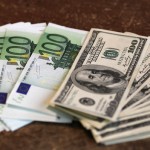Australian dollar lost ground against its US counterpart on trading Wednesday, after marking its most considerable daily advance since June yesterday, ahead of Reserve Bank of Australias quarterly policy statement, scheduled to be released on Friday.
AUD/USD slipped to a session low at 0.8874 at 3:45 GMT, after which consolidation followed at 0.8892, falling 0.22% for the day. Yesterday the pair reached 0.8942, or the highest level since January 15th, while recording a 1.87% daily advance, or the most since June 3rd 2013. Support was likely to be received at February 4th low, 0.8731, while resistance was to be encountered at February 4th high, 0.8942.
At its meeting on policy on Tuesday Australian central bank maintained borrowing costs at the current all-time low level of 2.50%, which came in consonance with the majority of analysts’ forecasts. In a statement RBA Governor Glenn Stevens said “the most prudent course is likely to be a period of stability in interest rates.” He also underscored that a lower exchange rate of the Australian dollar may favor a balanced economic growth in the country. “Monetary policy is appropriately configured to foster sustainable growth in demand and inflation outcomes consistent with the target”, Stevens said.
The central bank is expected to publish its quarterly monetary policy statement on February 7th.
“The statement on monetary policy is likely to see the RBA upgrade its assessment on inflation and that should provide some underpinning support for the Aussie,” said Khoon Goh, a Singapore-based strategist at Australia & New Zealand Banking Group Ltd., cited by Bloomberg News. “Yesterday’s statement made it very clear that they have shifted to a neutral bias and rates will remain where they are for some time.”
The yield on Australian benchmark 10-year bonds climbed two basis points, or 0.02 percentage point, to reach 4.02% today. The yield was 3.96% before the Reserve Bank of Australia announced its rate decision.
At the same time, earlier on Wednesday the Australian Industry Group (AIG) reported that Australian Performance of Services Index (PSI) climbed to a reading of 49.3 in January from 46.1 in the preceding month.
Meanwhile, private sector in the United States probably added 185 000 new jobs in January, following a job gain of 238 000 in December. The official figures are to be released by the Automatic Data Processing Inc. (ADP) at 13:15 GMT today. Better than expected figures will certainly provide support to greenbacks demand.
On the other hand, activity in the services sector in the United States probably increased in January, with the corresponding PMI climbing to a reading of 53.7, after a month ago the index came in at a value of 53.0. The Institute for Supply Management (ISM) will announce the official reading at 15:00 GMT today.
Elsewhere, the Aussie was lower against the euro, with EUR/AUD cross advancing 0.28% on a daily basis to trade at 1.5194 at 7:56 GMT. AUD/NZD pair gained 0.18% to trade at 1.0842 at 7:56 GMT. Yesterday it rose to 1.0947, which was the highest point since December 12th.
A report made it clear that employers in New Zealand hired almost twice as many workers as initially expected during the final quarter of 2013, which boosted the view that Reserve Bank of New Zealand will probably raise borrowing costs at its meeting next month. Employment in the country rose 1.1% or by 24 000 people in Q4 compared to Q3, while preliminary estimates pointed to a more modest increase, 0.6%.
The rate of unemployment in New Zealand decreased to 6.0% during the fourth quarter of 2013, which marked the lowest rate since mid-2009 and came in line with expectations. Unemployment rate was 6.2% in the previous quarter.





